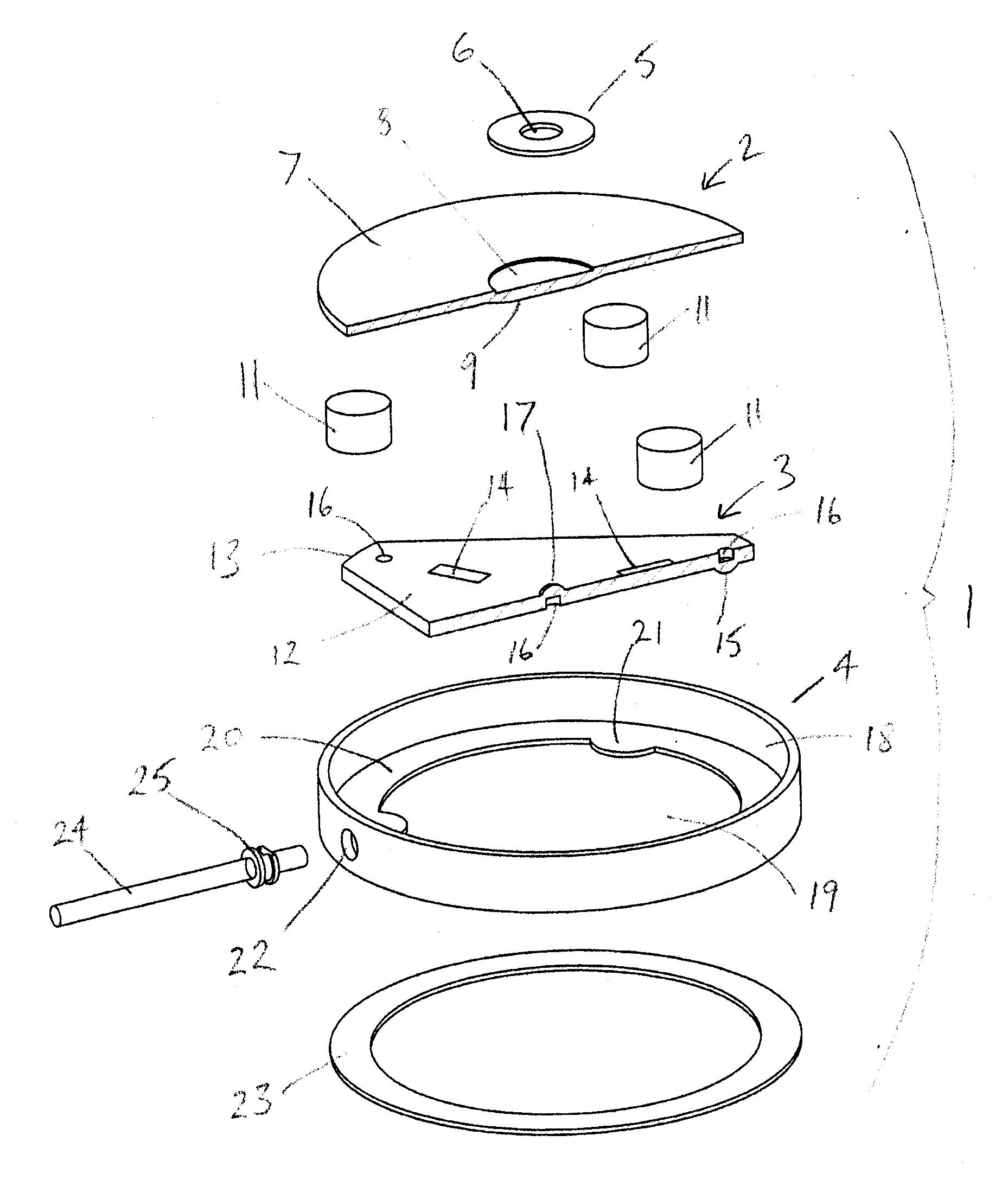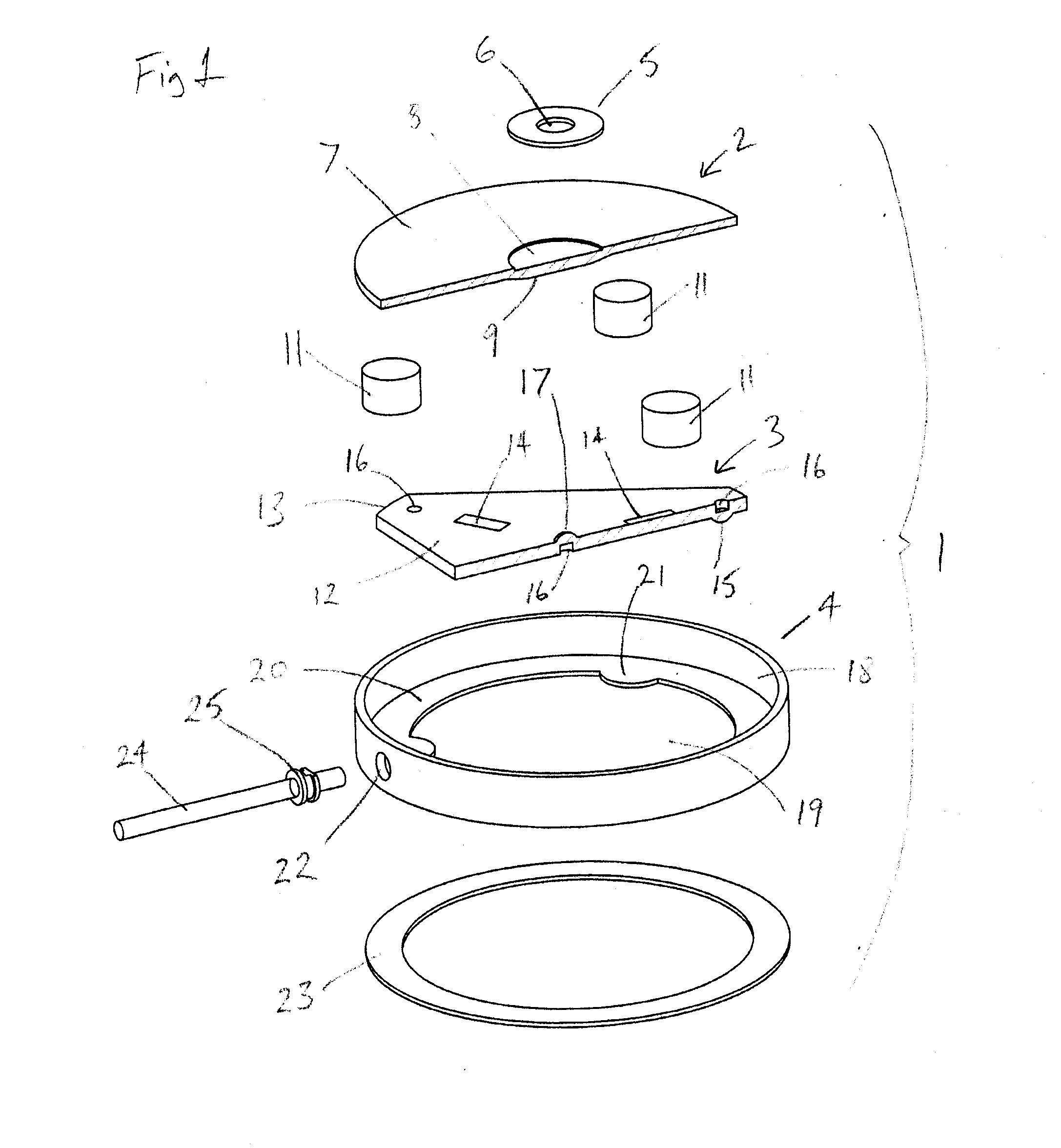Weight sensing
a weight sensor and sensor technology, applied in the field of weight sensors, can solve the problems of missing data, system limitations for multiple bed users, incomplete history of weight, etc., and achieve the effect of reducing the amount of weight data to be stored
- Summary
- Abstract
- Description
- Claims
- Application Information
AI Technical Summary
Benefits of technology
Problems solved by technology
Method used
Image
Examples
Embodiment Construction
[0047]Referring to FIG. 1 there is shown an exploded perspective view of a sensor pad 1 consisting of an upper platform 2 mounted over a load cell 3 and a base 4. The base 4 has a bottom 19, side wall 18, an optional bearing surface 20 with optional mounting pads 21 and a cable cut-out 22. An optionally truncated triangular plate 12 (shown as a half section) with an apex bump 15 at each of three apexes 13 on a bottom surface of the plate 12, one or more strain gauges 14 mounted to either the top, bottom or both surfaces of plate 12, a central bump 17 on a top surface of the plate 12 and optional bump recesses 16 to aid the formation of the bumps 15, 17, can be placed into the base 4 so that the three apex bumps 15 rest on the bearing surface 20, or optionally directly on the bottom 19, such that the load cell 3 sits in a stable manner by virtue of having three points of contact.
[0048]The platform 2 consists of a top disc 7 with an optional upper recess 8, and an optional thickened s...
PUM
| Property | Measurement | Unit |
|---|---|---|
| weight | aaaaa | aaaaa |
| weight | aaaaa | aaaaa |
| resilient | aaaaa | aaaaa |
Abstract
Description
Claims
Application Information
 Login to View More
Login to View More - R&D
- Intellectual Property
- Life Sciences
- Materials
- Tech Scout
- Unparalleled Data Quality
- Higher Quality Content
- 60% Fewer Hallucinations
Browse by: Latest US Patents, China's latest patents, Technical Efficacy Thesaurus, Application Domain, Technology Topic, Popular Technical Reports.
© 2025 PatSnap. All rights reserved.Legal|Privacy policy|Modern Slavery Act Transparency Statement|Sitemap|About US| Contact US: help@patsnap.com



